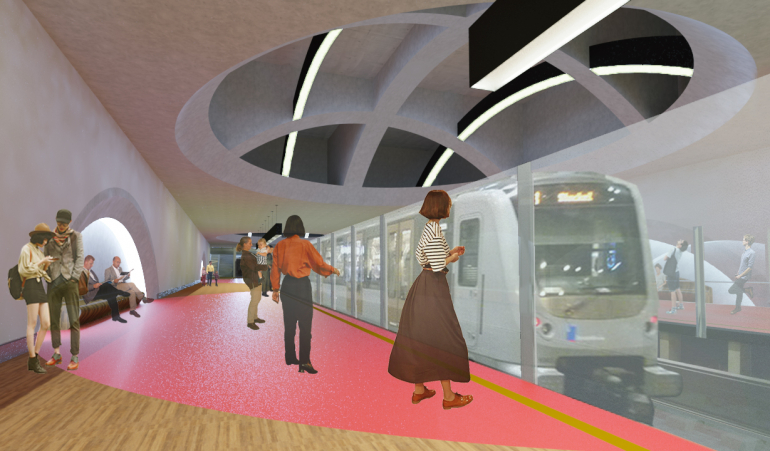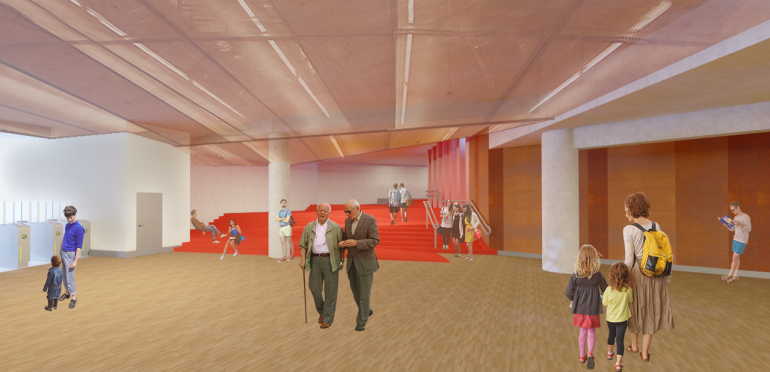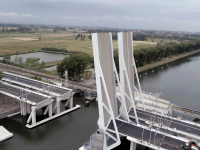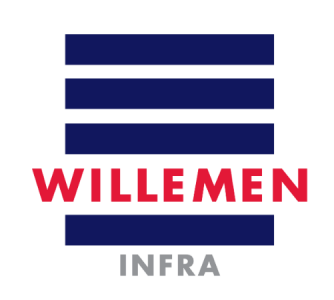Willemen Bouw was established on 30 April 2025 through the merger of Willemen Construct, Cosimco, Franki Construct and Tools.


Metro station Toots Thielemans - Brussels
In the centre of Brussels, we are building two new metro tunnels and the brand new Toots Thielemans metro station as part of the Metro 3 project. A first tunnel runs from Baraplein via Jamarlaan and Kleine Ring to Stalingradlaan, where we are building the new station. From here, a second tunnel starts under the Zuidpaleis to Lemonnierlaan. The construction project is one of the most ambitious and complex of its time in our capital. Together with Besix and Jan De Nul, Franki Construct is part of TM Toots, the temporary partnership carrying out the works on behalf of STIB.
Ambitious and complex
The Toots Thielemans metro station, previously known under the project name 'Constitution/Grondwet', is located underneath Avenue de Stalingrad/Stalingradlaan between the Brussels-South and Anneessens stations. The station will consist of two platforms on Level -2 and three mezzanine levels for ticket counters and access to the platforms. Access will be available via Boulevard du Midi/Zuidlaan and the Palais du Midi/Zuidpaleis, as well as via a new pedestrian tunnel linking to the Lemonnier tram stop, which will remain in its current location.
The construction of the new metro station and two tunnels is one of the most ambitious and complex construction projects Brussels has seen in recent times. The Toots Thielemans metro station will provide access to the neighbourhood surrounding Palais du Midi/Zuidpaleis due to its position on Metro 3, the new public transport artery for Brussels. With a capacity three times greater than the tram and with trains passing through every three minutes, frequent and fast services are guaranteed.
Nuisance reduction
The experience of the three parties in the Toots temporary partnership is proving hugely valuable to ensure the project is completed as planned and in the right way. Works will be carried out both above ground and underground, in a densely populated shopping area. For that reason, Toots is partnering with STIB-MIVB, the Brussels-Capital Region, the City of Brussels and the Municipality of Sint-Gillis and other stakeholders to develop comprehensive plans to alleviate any inconvenience for residents and businesses nearby.
For example, working methods that cause less noise and fewer vibrations will be used, the storage and working space required will remain limited to an absolute minimum and a new roundabout will be built to divert traffic on the inner ring road and keep the traffic situation as stable as possible while the works and various phases of the project are ongoing. The fact that some businesses have been given a new and temporary home in the newly opened ‘Stalingrad Village’ also forms part of these nuisance reduction measures.
Climate and society
Toots is committed, in close cooperation with STIB-MIVB, to offering internships and training to people from disadvantaged backgrounds and disabled people, and to employing them. In addition, the temporary partnership will use Brussels-based jobseekers for specific tasks such as exterior finishing, bricklaying, flooring and painting as part of local integration projects. Toots is also actively committed to simultaneously reducing and extensively monitoring the carbon footprint of the works. Carbon thresholds have been set and will be monitored for the main activities, such as the delivery of concrete and reinforcement steel and the removal of soil. In concrete terms, this means that the production and the supply and removal chain of these materials are determined and monitored right from the start.
Through the use of solar panels, Toots is generating most of the electricity it needs for its office units on site. Highly energy efficient site huts are also being used. Bearing in mind the high level of water consumption required for the foundation works, the company recently switched to water from the River Senne instead of municipal mains water. The water extracted as a result of groundwater drainage will mainly be discharged into the Senne instead of into the sewer system. In addition, hardly any generators are used on site thanks to specially fitted mains connections for the site installations. To top it all off, electric equipment will be used wherever possible.










